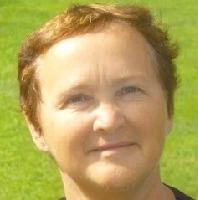Background
Within the Netherlands there are several archives with sheetmusic. There is not a national organization which covers those archives. Due to financial problems in 2013, all these archives were closed for public and their collections were no longer available. The largest collection is at the Stichting Omroep Muziek ((SOM) Dutch Broadcast Music), which has about 650,000 titles, classical music as well as popular music, salon music and, the unique part, the music which was specifically composed or arranged for the national radio and television broadcasts from 1920 until 1980 (180,000 titles).
Our project
It was well recognized that the collection of SOM was unique and should be preserved and made available to the public so it could be played and heard again in one way or another. Therefore, supported by the Dutch government and the city of Hilversum, we could start a project to digitize the collection and make it available for the public again via our website www.muziekschatten.nl. To make sure that the preservation will be for the long term, we have defined processes to check and validate the material (website and digitized material) and migrate it, if applicable.
We could not digitize the whole collection, so we had to make choices. In line with our preservation strategy, we decided to start with the most vulnerable part of the collection, the hand written, not published, compositions and arrangements specifically made for national radio and television broadcasts. This is also the unique part of the collection.
This collection was still only described on paper catalogue cards, so the first step in the project was to type these 180, 000 cards over into our catalogue system. After that, we could start making the selection of the most valuable material. To present the collection as broad as possible, we decided to digitize the scores only (if applicable) and not the whole piece.
One of the goals, besides preserving it for the long term, was to make the collection available again for the public. We also wanted to make it possible to connect to as many other collections as possible. For this reason, we decided to publish our whole catalogue as linked open data (LOD). In line with the national strategy for cultural heritage we tried to make the catalogue as open as possible. Connecting data is still a growing process in the Netherlands, we investigated first the possibilities to connect to the Institute of Sound and Vision, which has the archive of the broadcasted programs. This is still going on; the catalogues are very different.
The website presents 650,000 catalogue items and is available for free. At this moment we have 30,000 titles digitized and available via our website. Only if you want to look into the digitized material, you have to become a member of Muziekschatten. We will end the project medio 2019 and expect to have 40,000 titles digitized.
During the project, we encountered several unique pieces, which were not known to the public. We supported several new programs and live shows based on this music. The main goal of the project, ‘let the music be heard again’, is achieved!
The future
We learned a lot during this project. We also noticed that there is a very large group of people who are interested in this archive. We decided to start an investigation to see if it is possible to create one platform which connects the large music archives. One website, one set of Linked Open Data, which connects to the individual archives. Ambitious, as we noticed during the first steps we are making; the various archives all have different ways of describing their collections and standards were not very much used! At this moment we are investigating in more detail and also working on a plan to get (financial) support to execute this project.

Read more...